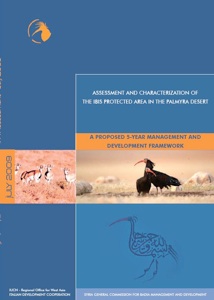END OF STORY ? (2009-10)




2009
Following the second ibis breeding failure in 2008, a new institution took over the responsibility of ibis protection and IPA management: the Desert Commission, headed by Eng. Mr. Ali Hamoud.
An IUCN pilot initiative - funded by DGCS (and partly by the Nederlands and Finnish embassies in Damascus), aimed at developing the Ibis Protected Area, was started in autumn 2008. A socio-economic and anthropological survey was carried out in December 2008 and two expeditions at ibis wintering grounds in Ethiopia have been implemented during November 2008 – January 2009. Searches for adult ibises on the Ethiopia highlands and for young on Djibouti coast were also carried out in the framework of the IUCN project - with no detections.
An Ibis Protected Area Assessment was produced in the framework of the IUCN project (Serra et al 2009) laying the ground for sound management of the protected area in the future. This important document was presented and delivered to H.E. Mrs Asmaa during her field visit in May 2010.
In spring 2009, only three adults and 2 sub-adults returned from migration, making two breeding pairs. Both pairs lost the chicks for mostly unknown reasons (Serra et al. 2009 a, Serra et al. 2009 b).
One of the 2 sub-adults tagged in July - named Julia after Mrs Julia Marton Lefevre (Director General of IUCN) visited the ibis colony in spring 2009 - was shot at the end of her first day of migration in the village of Tabarjal in northern Saudi Arabia, on 21 July 2009. This event finally evidenced what had been suspected in a long time: that hunting along migratory route across Arabia is threat n. 1 for survival of ibis colony.
During IAGNBI meeting in Palmyra, in November 2009, G. Serra launched a desperate call for action: a 12-month Emergency Action Plan was then approved, envisaging three key objectives for 2010:
1. intensive protection program at breeding grounds during spring 2010, making use of agreed Standard Ibis Protection Protocol
2. satellite tracking and awareness raising in Saudi Arabia during spring migration 2010
3. supplementation of Turkish captive-born chicks at the wild colony in Palmyra in July 2010.
2010
Despite funds made available by National Geographic, no expedition could be organized on time aimed at satellite tracking the birds in Saudi Arabia during the spring migration 2010 (in February). Sadly, during this migration another adult disappeared, Sultan, the pillar of the colony - a large and strong male. The colony was then reduced to 3 individuals…, only one breeding pair, for the first time ever!
The expedition finally took place in March 2010, with key cooperation of Saudi Wildlife Commission: good information was collected about potential threats in place along migratory route (Serra 2010).
A very “light” protection program was then supported by BLME in spring 2010, with no scientific nor technical assistance provided to authorities - completely neglecting the Standard Ibis Protection Protocol agreed at IAGNBI meeting and the Emergency Action Plan. The pair failed the breeding for unknown reasons: no data is available about this breeding failure.
Another expedition was carried out in Saudi Arabia, with key cooperation by Saudi Wildlife Commission and thanks to the National Geographic Committee for Research and Exploration, during spring-summer 2010. The 2 expeditions in Saudi Arabia showed that hunting and electric cables across western Saudi Arabia may be the main causes for the high mortality of immature ibises - pesticides could be an additional deleterious reason for which no sufficient evidence was gained yet.
A supplementation operation in June-July 2010 was made it possible only thanks to the direct interest of H.E. the Syrian First Lady and the Turkish First Lady.
Overall, most of the Emergency Action Plan agreed in November 2009 in Palmyra, totally remained on paper!
The colony is at the very brink now...

© g. serra
© s. jabbour
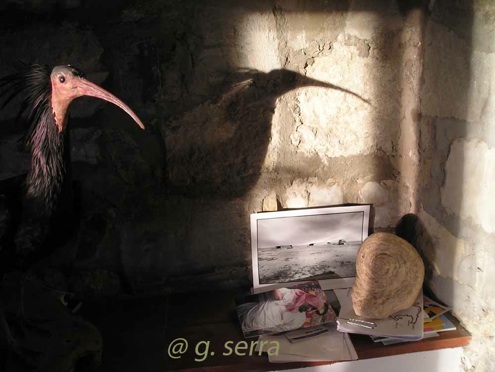
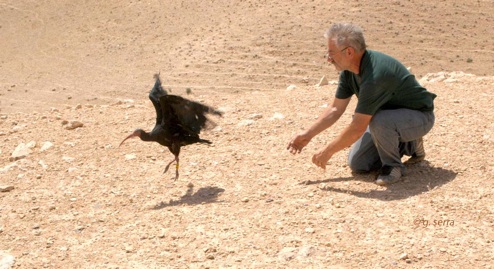
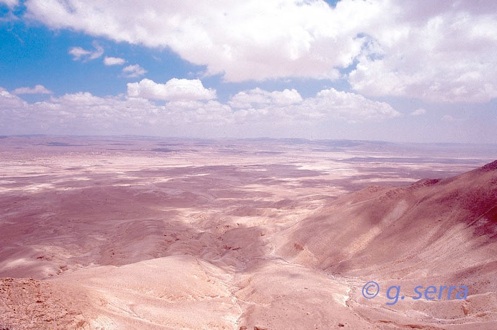
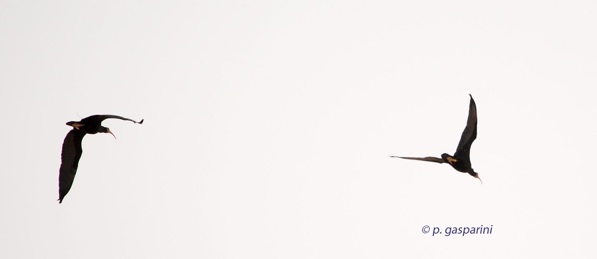
Julia, soon after being shot by a hunter in northern Saudi Arabia, in July 2009 - as photographed by the hunter himself (the person to the right, photographed in March 2010.
A young ibis electrocuted in Jordan in autumn 2008.
An adult breeder shot in the vicinity of Palmyra, Syria, in 2001.
Two of the last 3 surviving wild bald ibises in the Middle East, photographed in Palmyra May 2010.

